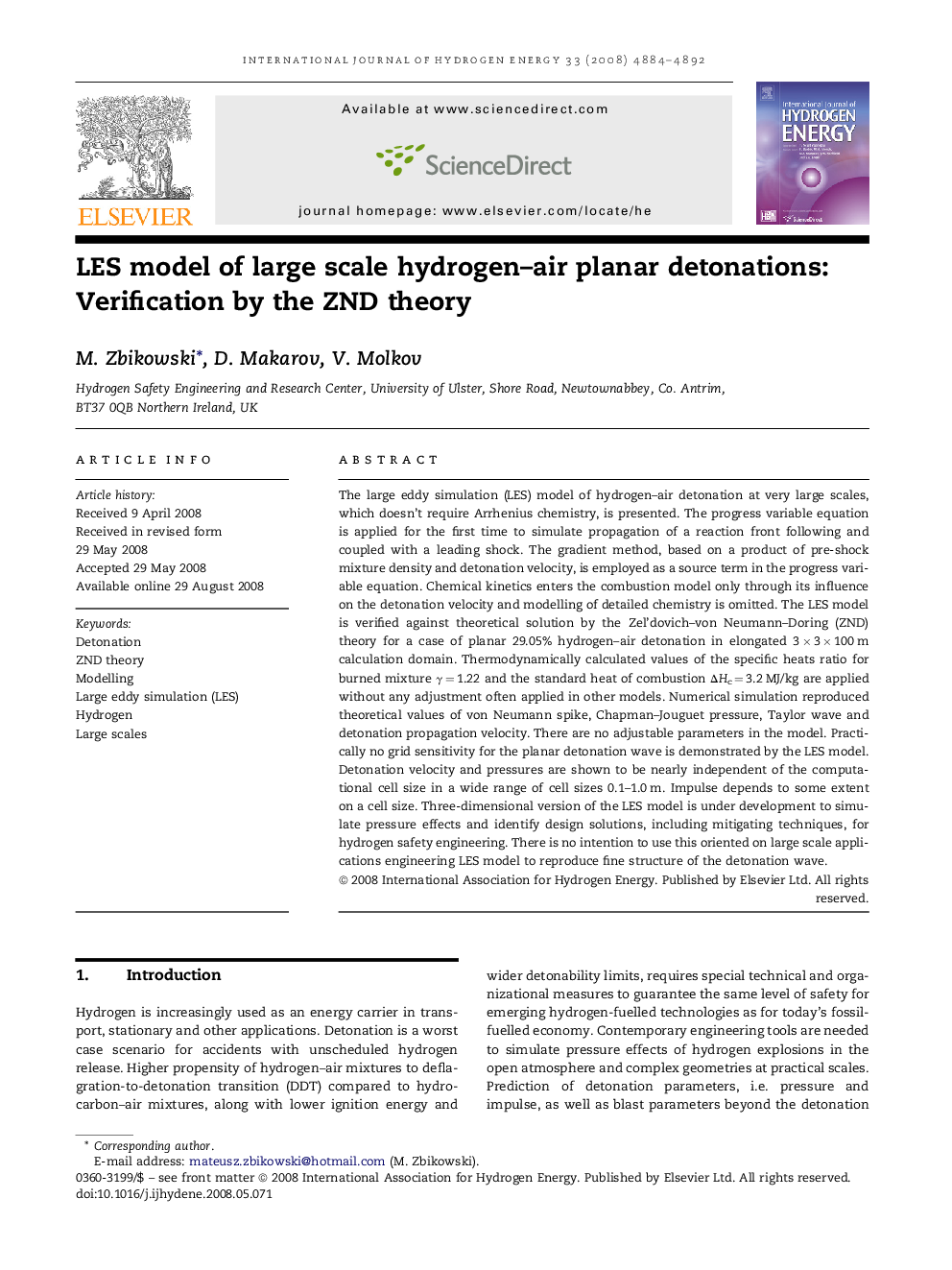| Article ID | Journal | Published Year | Pages | File Type |
|---|---|---|---|---|
| 1279231 | International Journal of Hydrogen Energy | 2008 | 9 Pages |
The large eddy simulation (LES) model of hydrogen–air detonation at very large scales, which doesn't require Arrhenius chemistry, is presented. The progress variable equation is applied for the first time to simulate propagation of a reaction front following and coupled with a leading shock. The gradient method, based on a product of pre-shock mixture density and detonation velocity, is employed as a source term in the progress variable equation. Chemical kinetics enters the combustion model only through its influence on the detonation velocity and modelling of detailed chemistry is omitted. The LES model is verified against theoretical solution by the Zel'dovich–von Neumann–Doring (ZND) theory for a case of planar 29.05% hydrogen–air detonation in elongated 3 × 3 × 100 m calculation domain. Thermodynamically calculated values of the specific heats ratio for burned mixture γ = 1.22 and the standard heat of combustion ΔHc = 3.2 MJ/kg are applied without any adjustment often applied in other models. Numerical simulation reproduced theoretical values of von Neumann spike, Chapman–Jouguet pressure, Taylor wave and detonation propagation velocity. There are no adjustable parameters in the model. Practically no grid sensitivity for the planar detonation wave is demonstrated by the LES model. Detonation velocity and pressures are shown to be nearly independent of the computational cell size in a wide range of cell sizes 0.1–1.0 m. Impulse depends to some extent on a cell size. Three-dimensional version of the LES model is under development to simulate pressure effects and identify design solutions, including mitigating techniques, for hydrogen safety engineering. There is no intention to use this oriented on large scale applications engineering LES model to reproduce fine structure of the detonation wave.
